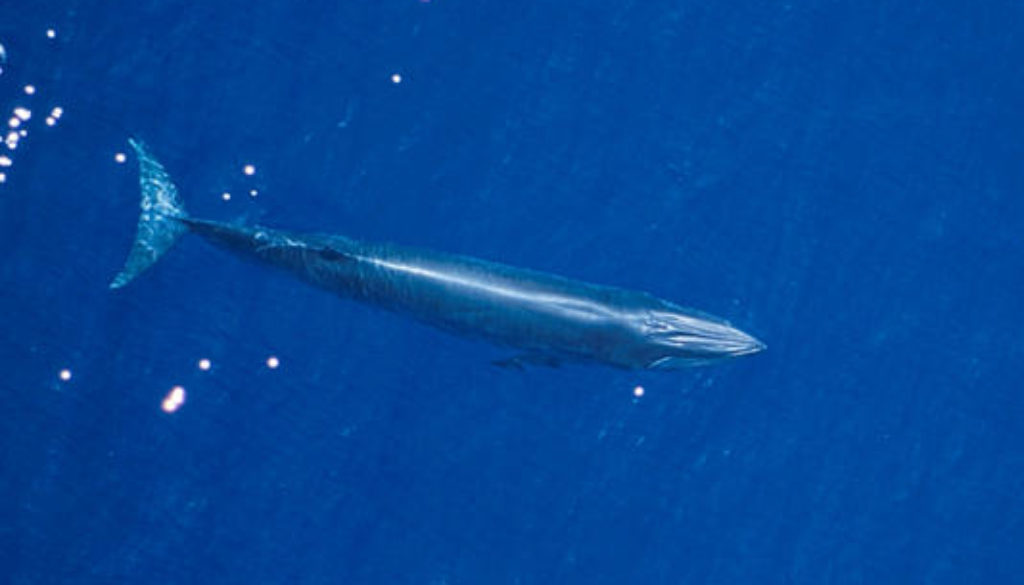Bryde’s Whales Are a Step Closer to ‘Endangered’ Status
By Francine Kershaw, Natural Resources Defense Council
Today, one of the United States’ rarest and most threatened baleen whales are a step closer to receiving protection under the Endangered Species Act.
A little over 60 miles from the Florida panhandle, in the northeastern ‘corner’ of the Gulf of Mexico, lies the deep and unusually ‘S-shaped’ DeSoto Canyon that is home to the last individuals of a unique group of Bryde’s whales.
Named after the 19th Century Norwegian whaler, John Bryde (pronounced “BROO-dus”), Bryde’s whales are found in warm seas around the world, growing to 55 feet long and 90,000 pounds as they filter out plankton, crustaceans, and small fish using their large baleen plates.

The Gulf of Mexico whales are highly distinctive from other Bryde’s whales, however. They differ in size, communicate using unique calls, and genetic tests have confirmed they represent a genetically separate subspecies. Gulf of Mexico Bryde’s whales are also distinctive in one other sense: a recent stock assessment estimated that only 33 animals remain, making them one of the most endangered species or subspecies of whale on the planet.
Fortunately, the National Marine Fisheries Service (NMFS) today released their proposed listing for the Gulf of Mexico Bryde’s whale as an “endangered species” under the Endangered Species Act, saying “we believe that the species faces a high risk of extinction.”
NRDC petitioned for the listing under the Endangered Species Act in September 2014, citing the small number of whales, the limited habitat, and numerous potential threats in the Gulf’s highly industrialized waters. After a thorough review of the best available information, NMFS agreed, concluding that energy exploration and development, and exposure to oil spills and spill response, are currently increasing the whale’s risk of extinction. These concerns have been borne out by history: Desoto Canyon is located only about 50 miles east of the catastrophic Deepwater Horizon oil spill. Today, their habitat lies right in the path of oil and gas expansion into the eastern Gulf.
The whales also face daily risks from collisions with ships, deafening ocean noise from oil and gas activity, and pollution from a wide range of sources. There are few regulatory mechanisms to protect whales from these threats, and those mechanisms that do exist have been generally ineffective.

The Endangered Species Act listing will not alone guarantee the recovery of the Gulf of Mexico Bryde’s whale, but it will play an important role in compelling action, providing tools to protect the last few individuals, and coordinating recovery efforts. Given its narrow range in the Desoto Canyon, and myriad of existing threats, a regional cooperative effort between federal, state, and private sectors will be needed to conserve the whales and the habitat upon which they depend.
And the proposed listing could not have come at a more crucial time. Foreshadowed by the likelihood of increased interest from the federal government in energy exploration and development in U.S. waters, these remarkable animals will need every advantage to ensure their survival.

